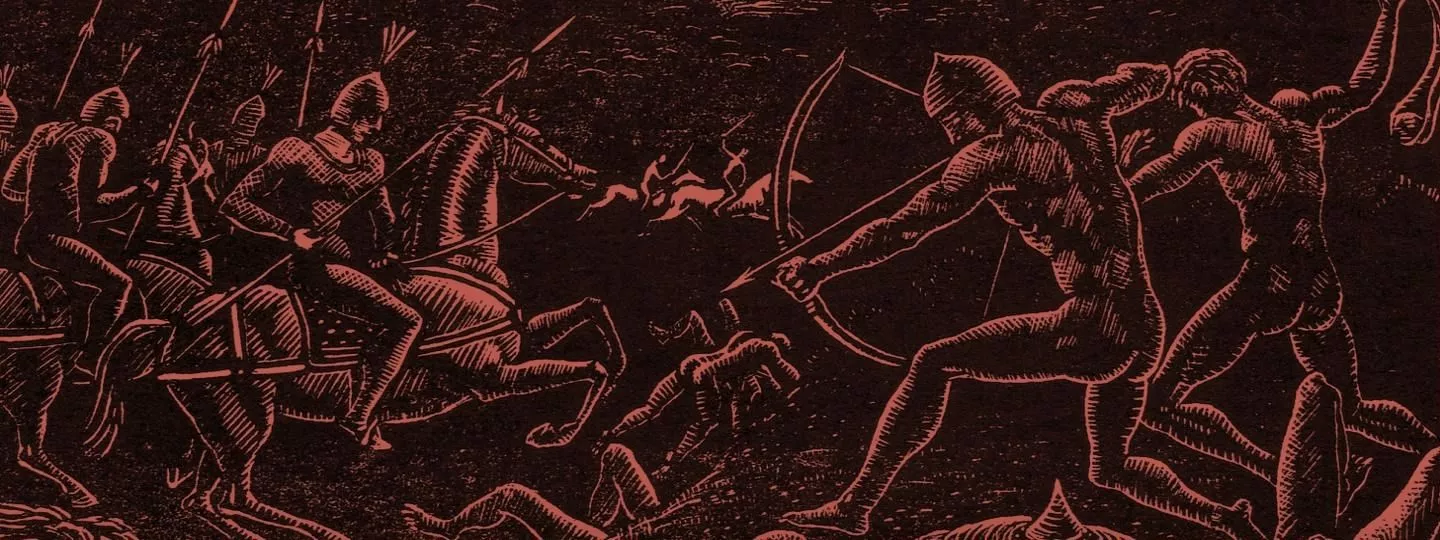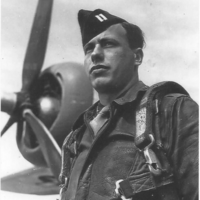
Ralph Chubb
Ralph Nicholas Chubb (8 February 1892– 14 January 1960) was an English poet, printer, and artist. Heavily influenced by Whitman, Blake, and the Romantics, his work was the creation of a highly intricate personal mythology, one that was anti-materialist and sexually revolutionary.
Ralph Nicholas Chubb (8 February 1892– 14 January 1960) was an English poet, printer, and artist. Heavily influenced by Whitman, Blake, and the Romantics, his work was the creation of a highly intricate personal mythology, one that was anti-materialist and sexually revolutionary.
Life
Ralph Chubb was born in Harpenden, Hertfordshire. His family moved to the historic town of St Albans before his first birthday. Chubb attended St Albans School and Selwyn College, Cambridge before becoming an officer in the First World War. He served with distinction but developed neurasthenia, and he was invalided out in 1918.
From 1919 to 1922 Chubb studied at the Slade School of Art in London. It was there that he met Leon Underwood and other influential artists. He went on to contribute several articles and poems for Underwood’s magazine, The Island. Although his work was displayed at such venues as the Goupil Gallery and the Royal Academy of Art, his paintings did not sell. There are several in public collections in Britain. His major painting The Well (1920) is in Wakefield; Southampton has bathers with boys wrestling, and there are nudes at Leamington, all illustrated in the Public Art Foundation catalogues. He moved with his family to the village of Curridge, near Newbury in Berkshire. He began to devote his artistic talents to the printed works which would remain his chief labour in life.
His books were created in several chief phases. His typeset books of the twenties were a humble offering, exhibiting Chubb’s talent for woodcutting and his quaint, visually inspired poetry. Even at this early stage, Chubb’s lifelong obsession with adolescent males was beginning to become apparent. He expands upon this theme more explicitly in An Appendix, a pederastic and spiritualist manifesto duplicated from a cursive manuscript. An Appendix was the first of his printed works to be printed in his own hand; he soon followed this with the first of his opulent lithographic books, The Sun Spirit. Throughout the nineteen-thirties, Chubb’s books became more elaborate and appealing. Water Cherubs crystallizes Chubb’s aesthetic of the youthful male form, and The Secret Country unfolds like an illuminated manuscript, recounting stories of Chubb’s family and his journeys among the Romani of the New Forest in Hampshire. Chubb’s printing press was interrupted by the war, but in 1948 he entered into the third period of career with two massive volumes: The Child Of Dawn and Flames of Sunrise. Each page of these two volumes is crowded with obscure digressions on Chubb’s mythology and drawings of symbolic significance. Briefly summarized, Chubb’s vision was a prophecy of the redemption of 'Albion’, or England, by the boy-god Ra-el-phaos, of whom Ralph claimed himself to be the prophet and herald. This echoes an earlier announcement to be found in The Heavenly Cupid:
Other themes run through all of Chubb’s work. He was forever haunted by the memory of a young chorister at St Albans who disappeared from Chubb’s life just as he had summoned up the courage to speak to him. Similarly, a brief sexual relationship with another boy when Ralph was 19 seemed to serve as a template for future visions of paradise. Chubb’s books become progressively more self-involved and paranoid. Seeking to articulate his pederastic desires, he created a personal mythology which explained everything in terms only he could understand. Nonetheless, Chubb’s work is of fascinating psychological significance; each of the various angels, knights, seers, and boy-gods in his dream world represents an aspect of his introspective and persecuted self.
Chubb, like many other artists of his generation, resented science for its intrusion into his imagination. He disparaged the scientists, orthodox theologians, and politicians of world, accusing them of squelching his personal thirst for liberty. In 1927 he wrote:
Chubb sought to persuade his readers in An Appendix of the verity of his solipsism by illustrating some examples of serendipitous events from his life. His aim is more on the mark when he excoriates the taboos and frustrations of modern life.
Failing in health and facing continuing legal and financial difficulties, Ralph Chubb abandoned his controversial works in the mid-fifties, and began to collect and reprint his early poems and childhood memories. Treasure Trove and The Golden City (published posthumously) are devoid of the usual profusion of naked, lissome youths, but instead offer a glimpse into his youthful imagination, and some of his most charming poetry. In the final years of his life he donated his remaining volumes to the national libraries of Britain. He died peacefully at Fair Oak Cottage in Hampshire and was buried next to his parents at the Kingsclere Woodland Church.
Chubb’s own assessment of his work conforms to the general critical reaction:
I do not necessarily claim to be a great artist or writer; but I claim to be a true spirit– this is a subtler test. Seek me out; but you may not find me. (An Appendix)
Works
None of the editions of Chubb’s books exceed more than 200 copies, and some of his lithographed masterworks exist in only 30 or 40 copies, of which a mere 6 or 7 are meticulously hand-colored by Chubb.
The dates and titles of Chubb’s printed works are given below.
Early typeset works
1924 Manhood
1924 The Sacrifice of Youth
1925 A Fable of Love & War
1927 The Cloud & the Voice
1928 Woodcuts
1928 The Book of God’s Madness
1929 An Appendix (duplicated hand-written text)
Lithographed texts
1930 Songs of Mankind
1931 The Sun Spirit
1934 The Heavenly Cupid
1935 Songs Pastoral and Paradisal (illustrated by Vincent Stuart; script by Helen Hinkley)
1936 Water Cherubs
1939 The Secret Country
Post-war prophetic texts
1948 The Child of Dawn
1953 Flames of Sunrise
Juvenalia and early romances
1957 Treasure Trove
1960 The Golden City
Posthumous works
1965 The Day of St Alban
1970 Autumn Leaves
References and further reading
Cave, Roderick (1960). In Blake’s Tradition: the Press of Ralph Chubb. The American Book Collector. 11 (2), p8-17
Cave, Roderick (1960). 'Blake’s Mantle’, a Memoir of Ralph Chubb. Book Design and Production. 3 (2), p24-8
D’Arch Smith, Timothy (1970). Love in Earnest. London: Routledge & Kegan Paul.
Rahman, Tariq (1991). Ephebophilia and the Creation of a Spiritual Myth in the Works of Ralph Nicholas Chubb. Journal of Homosexuality. 20 (1-2), p103-127
Reid, Anthony (1970). Ralph Chubb: The Unknown. Reprinted from The Private Library. 3 (3-4).
References
Wikipedia—https://en.wikipedia.org/wiki/Ralph_Chubb


